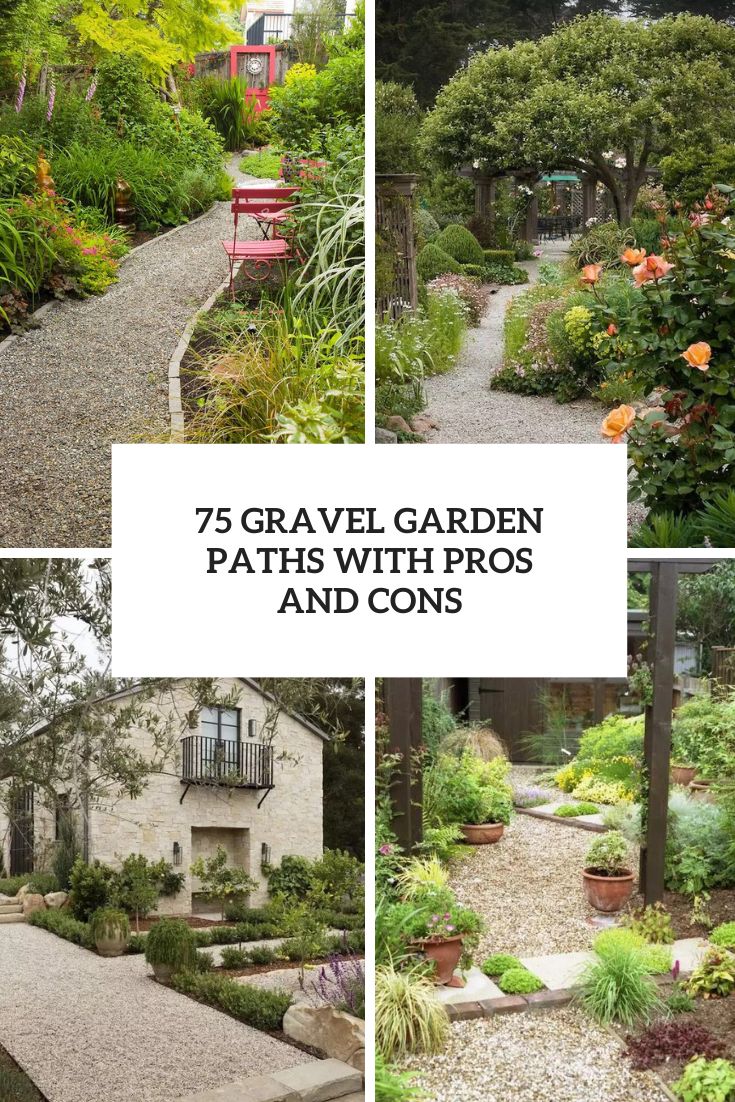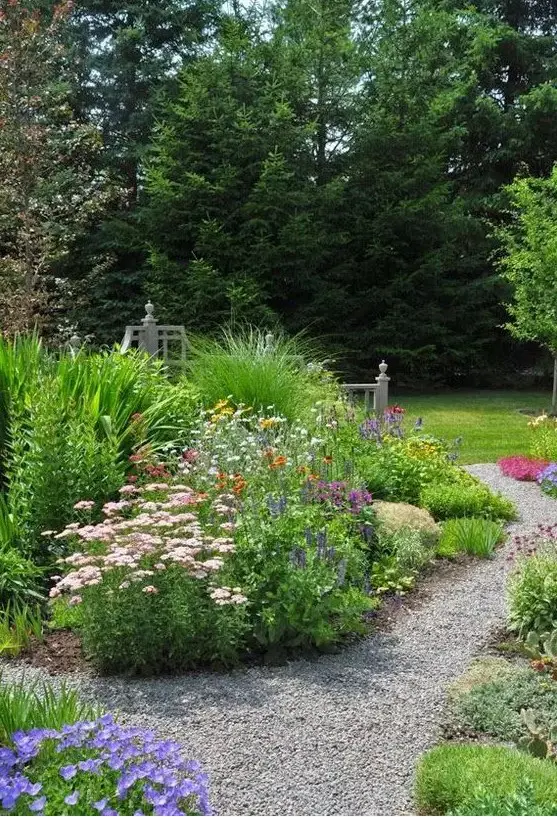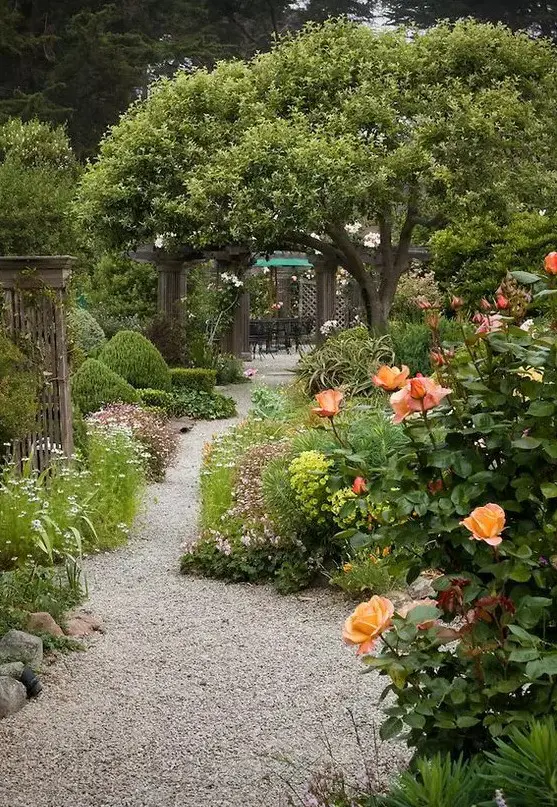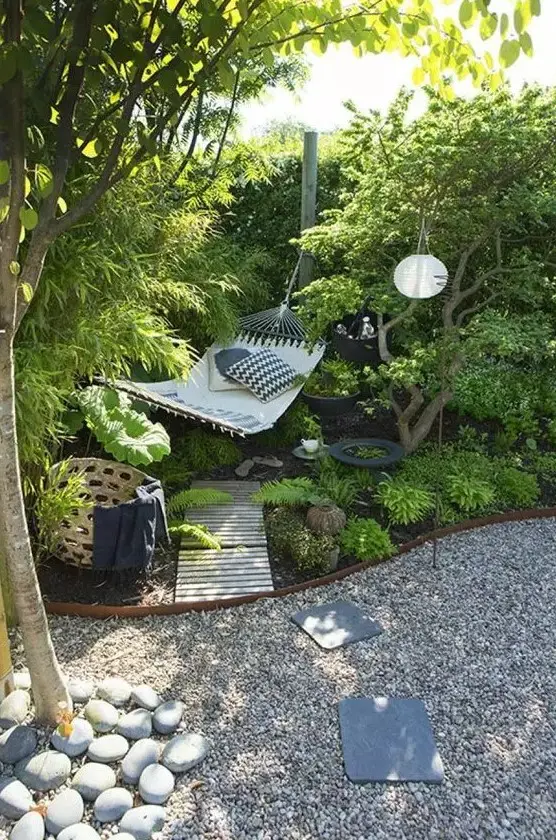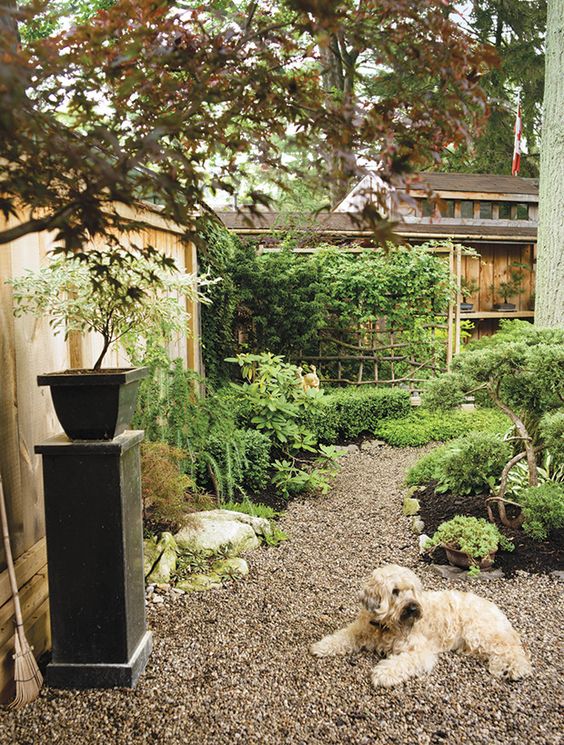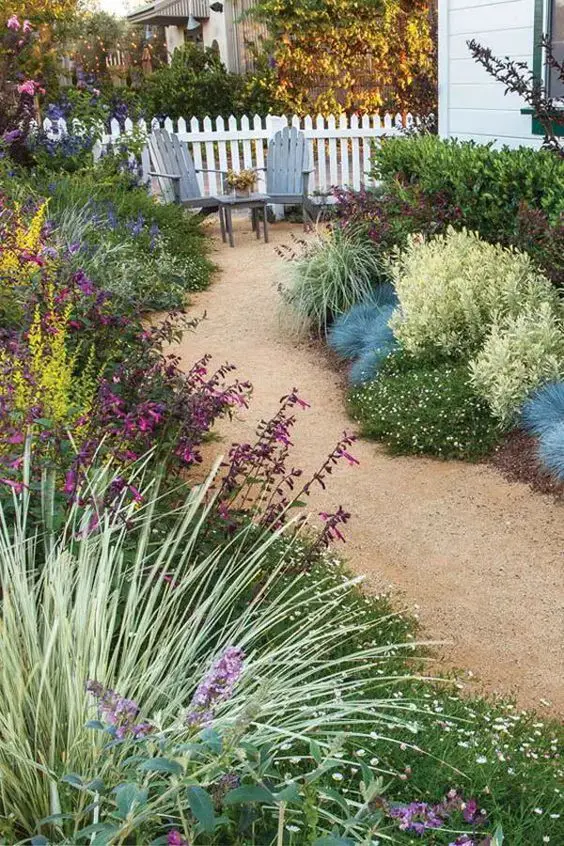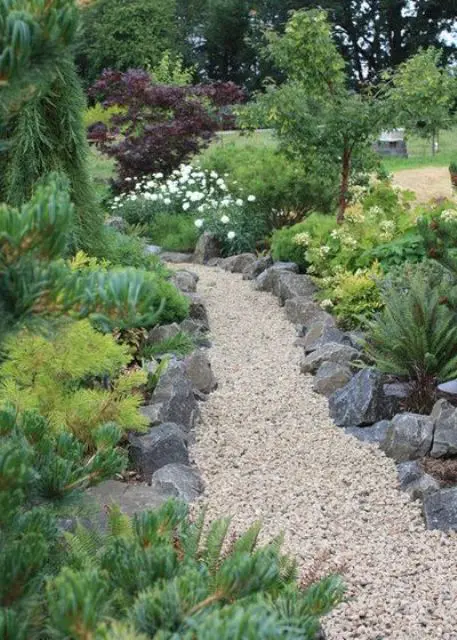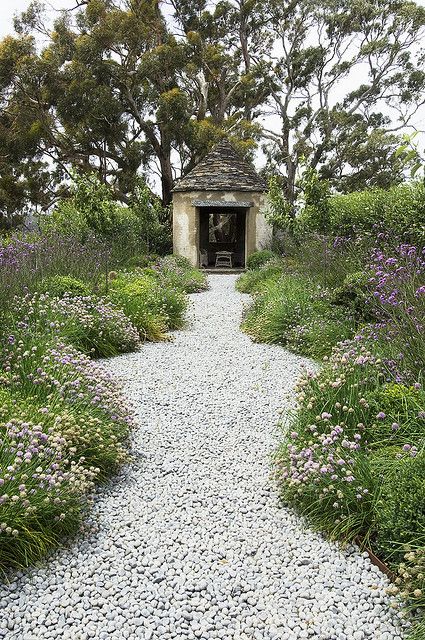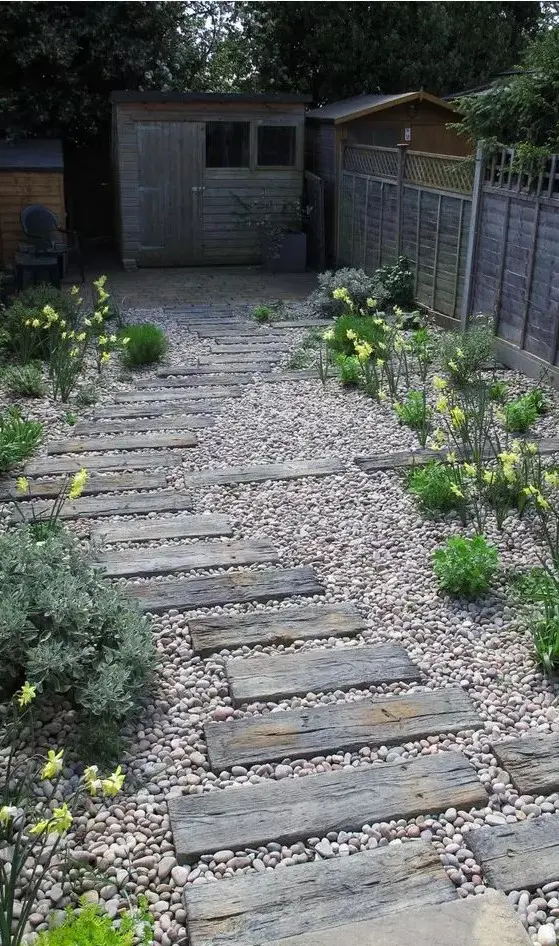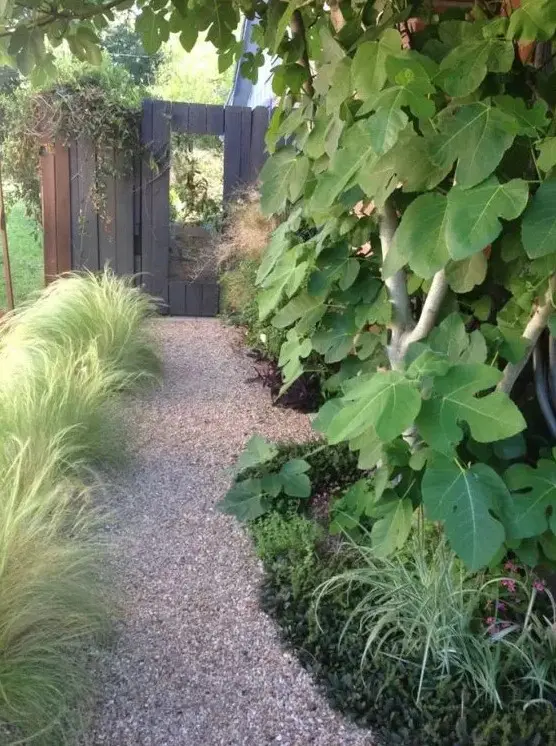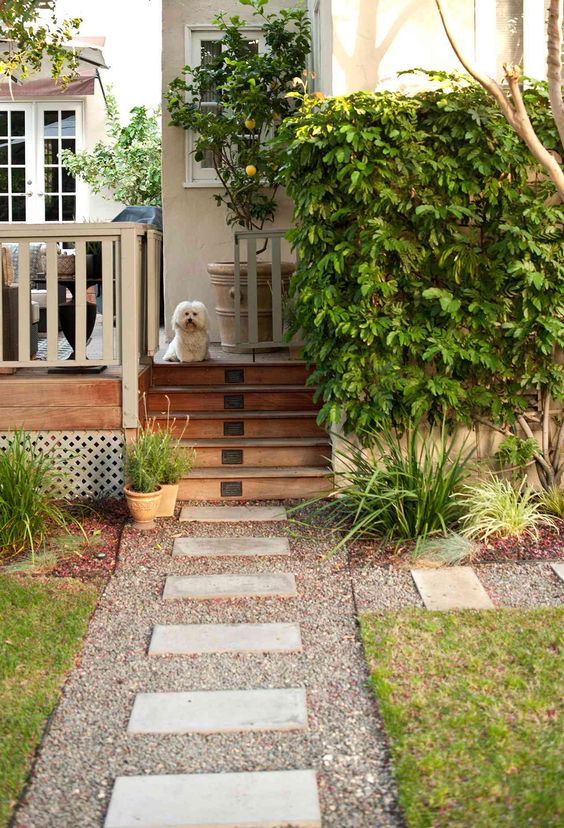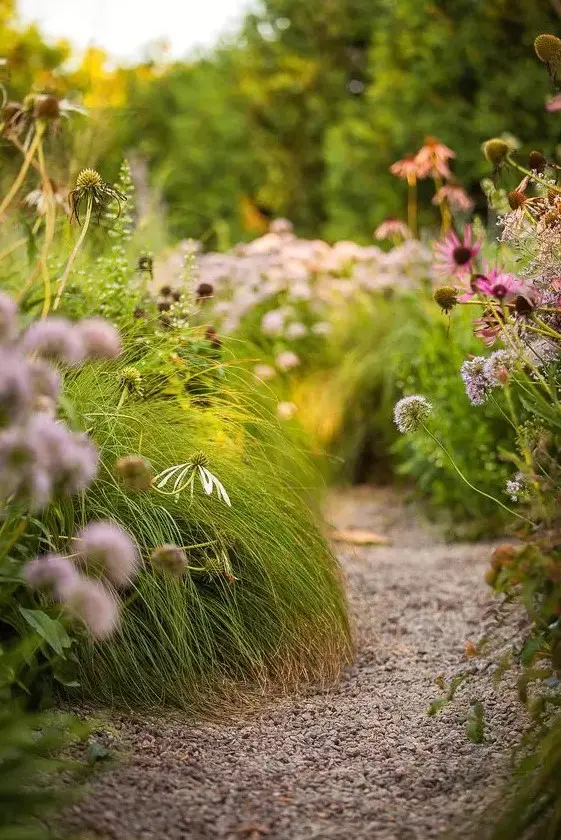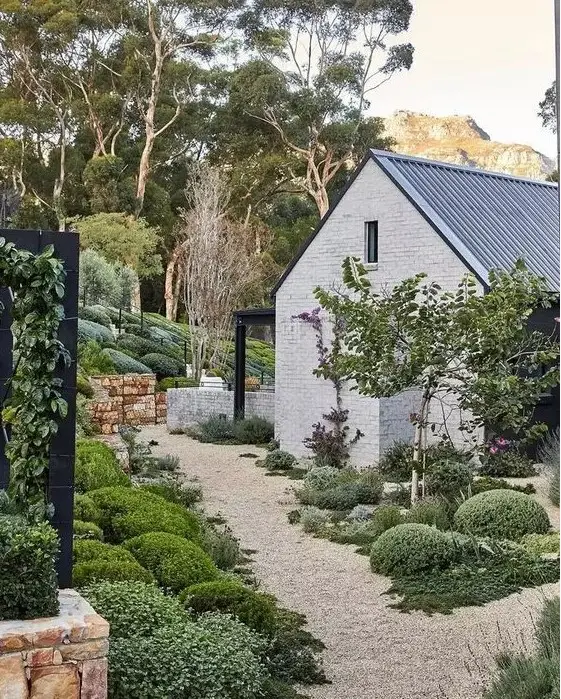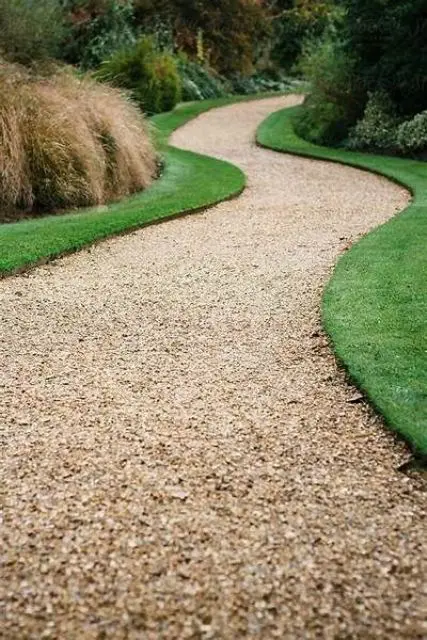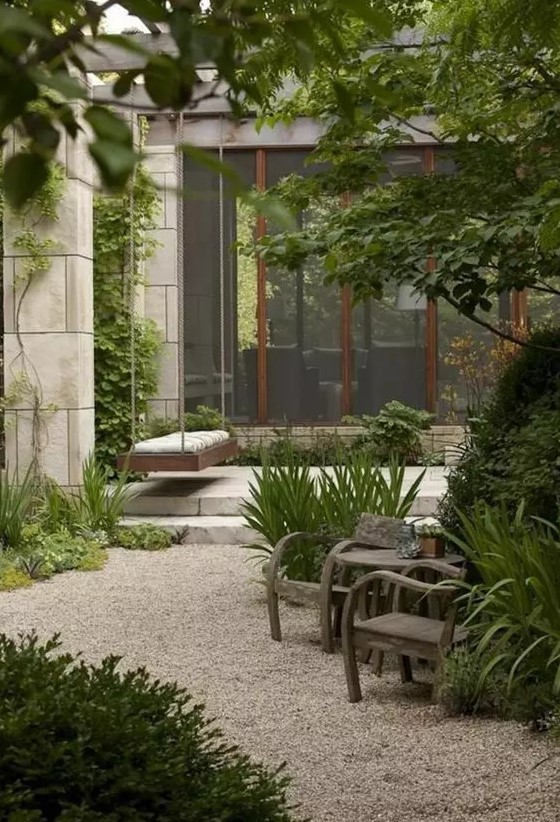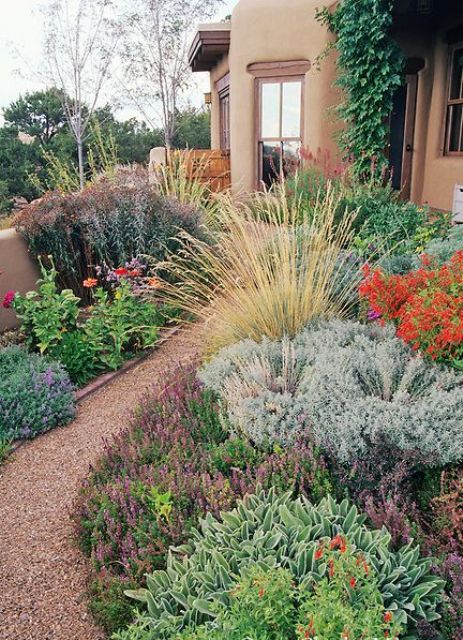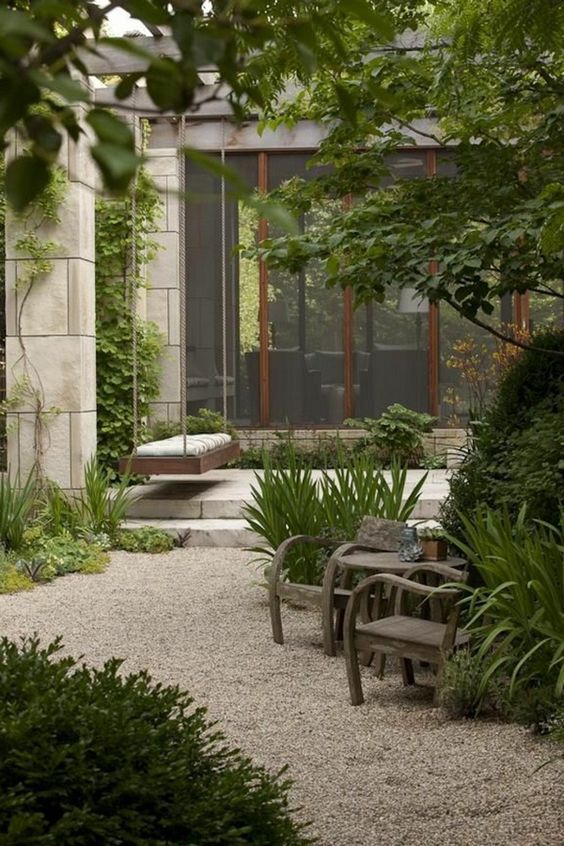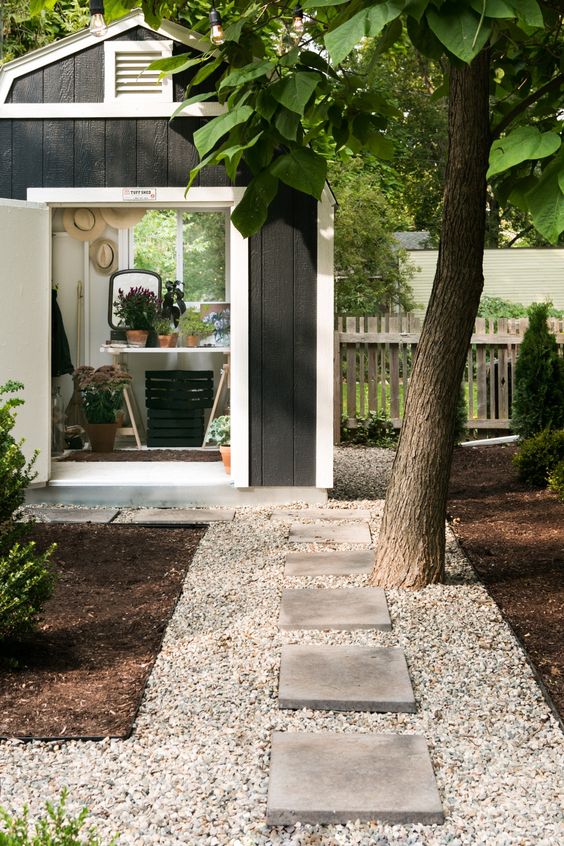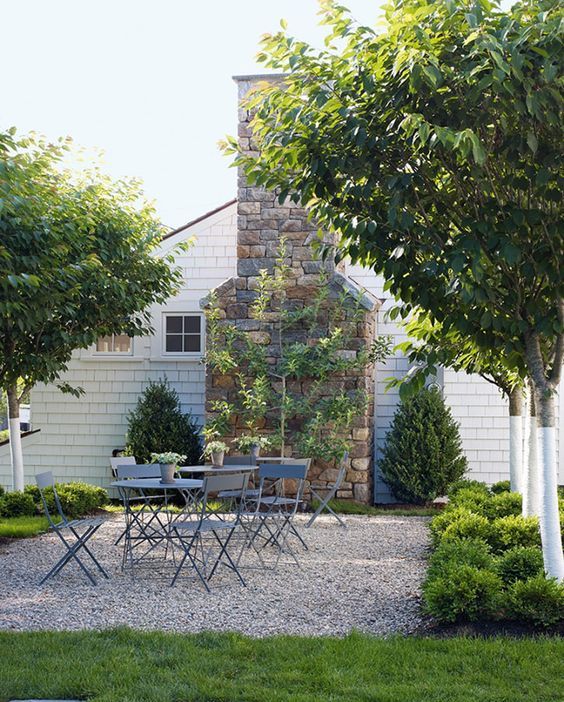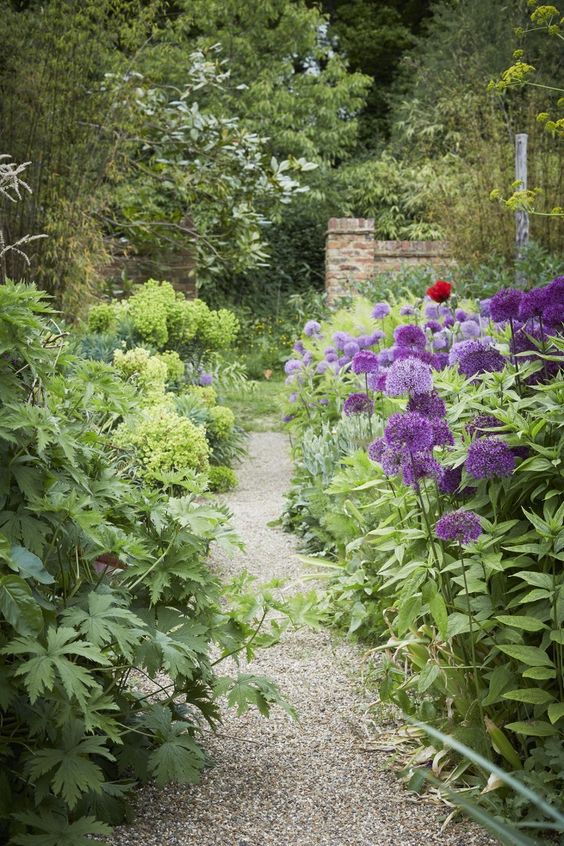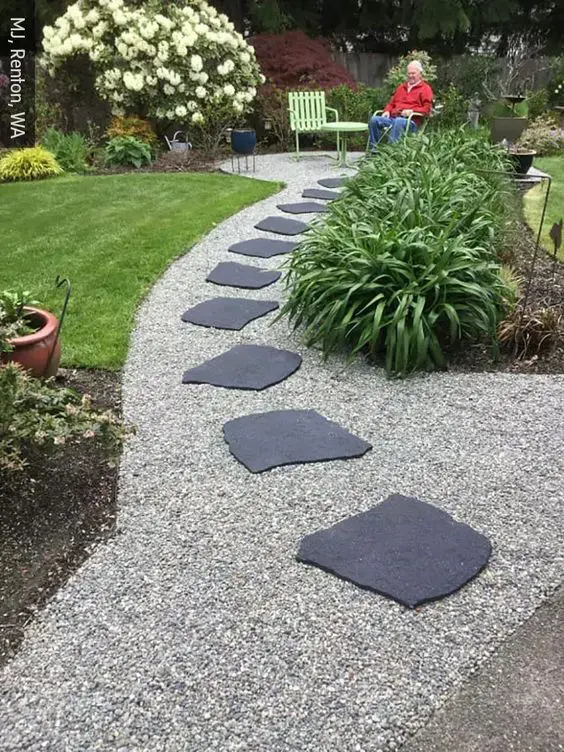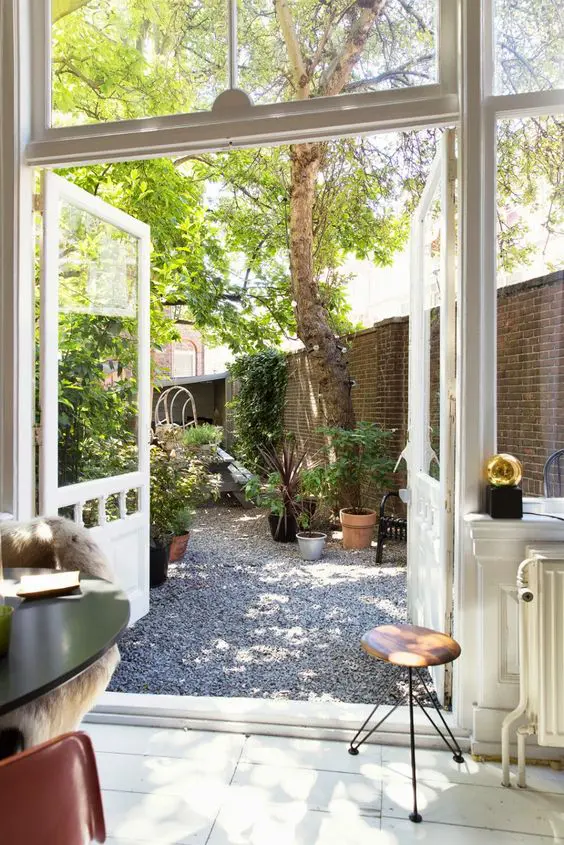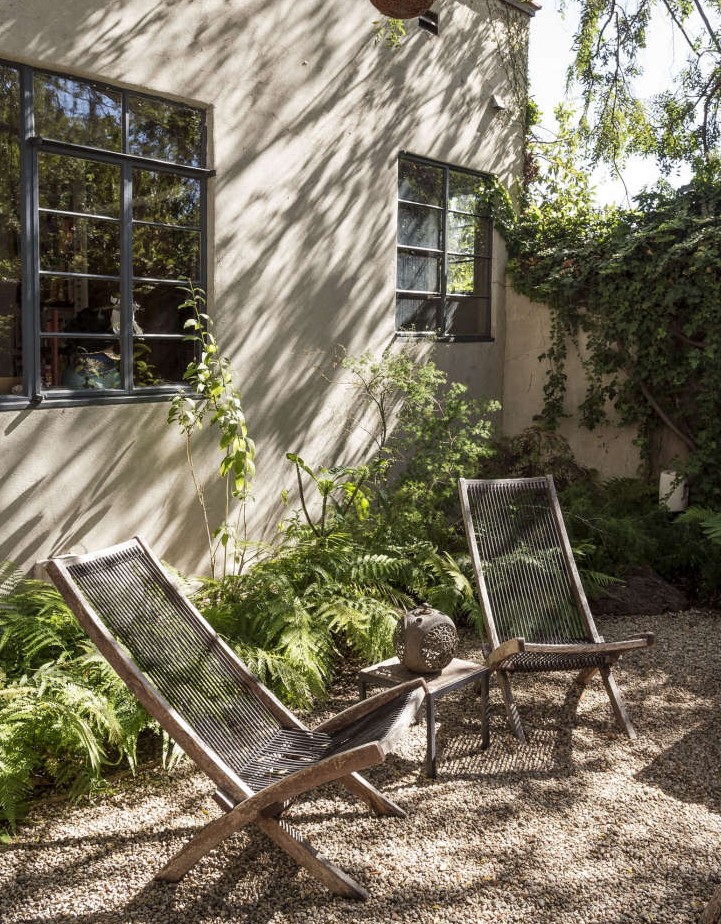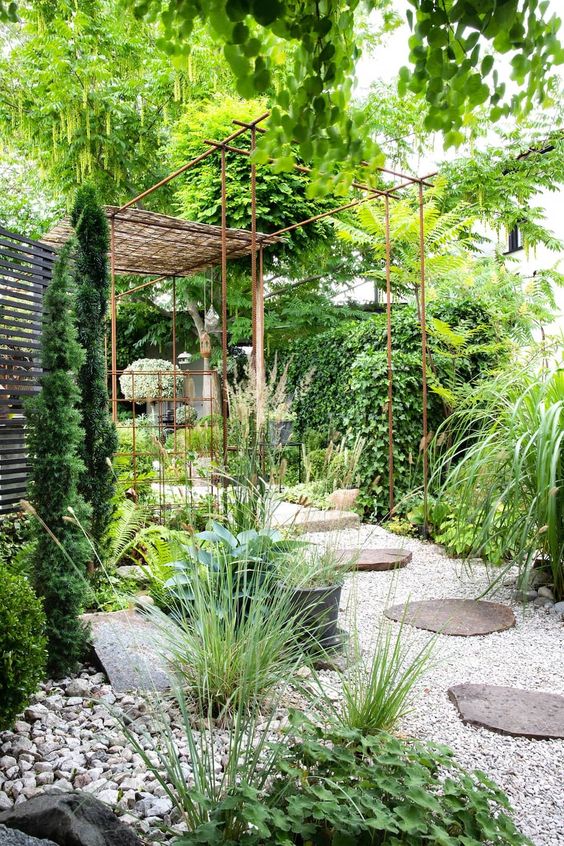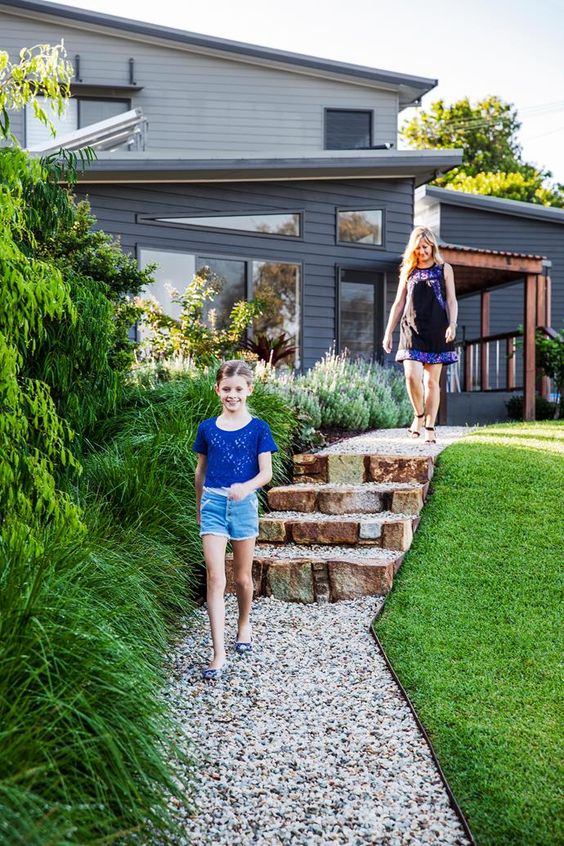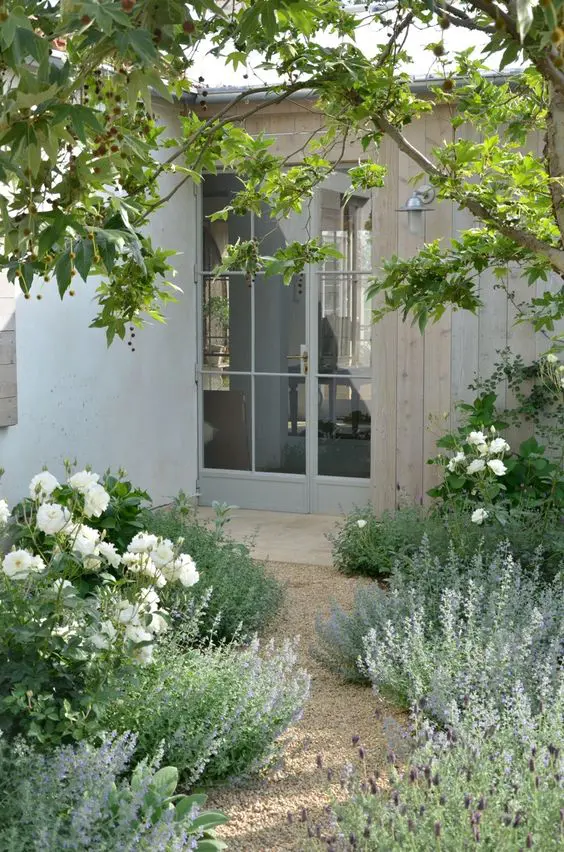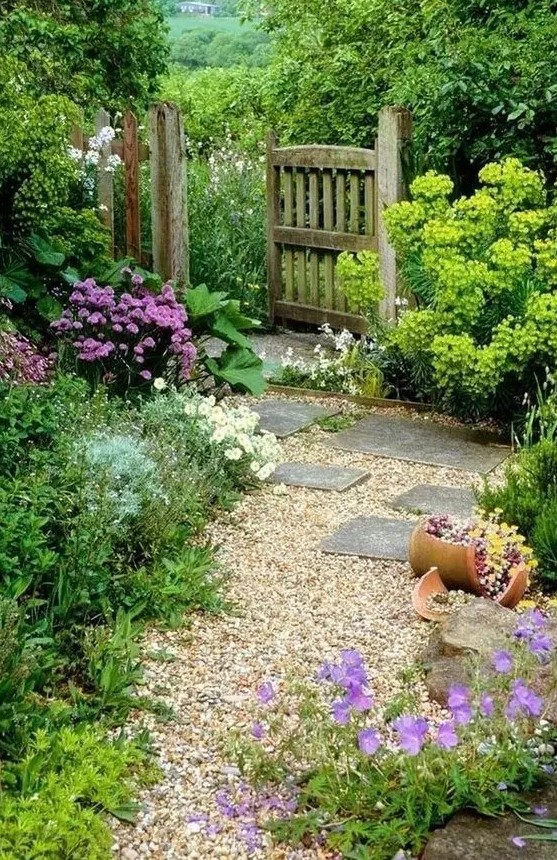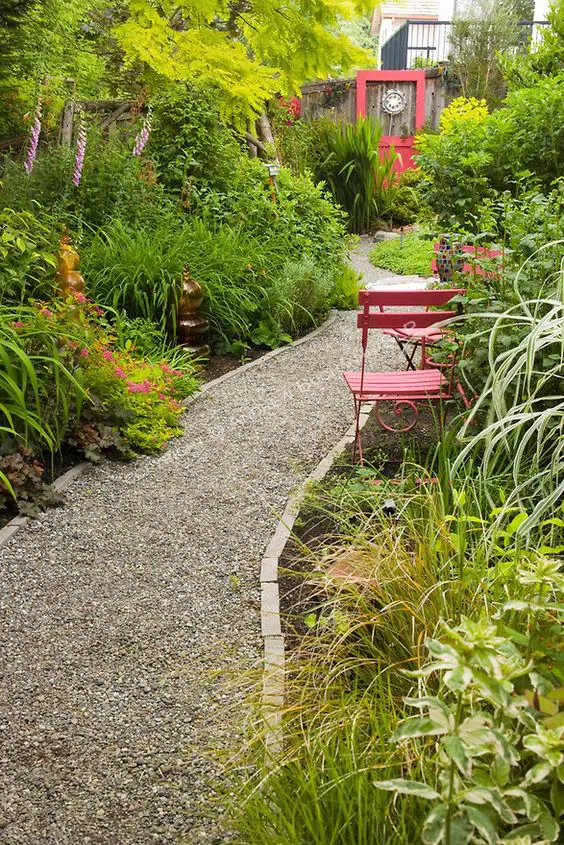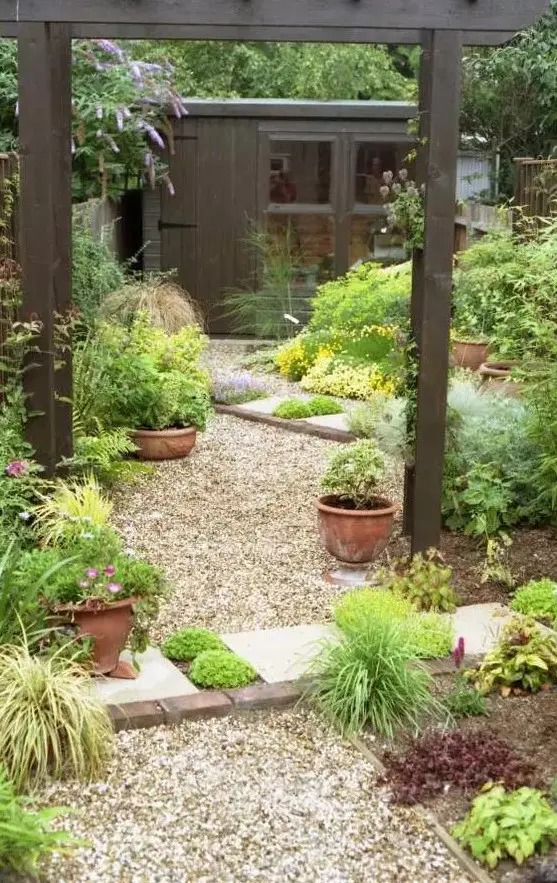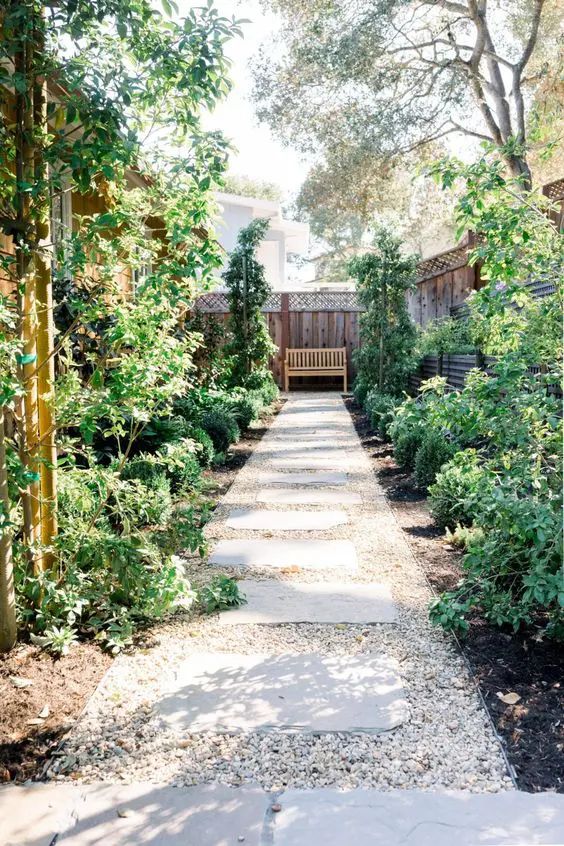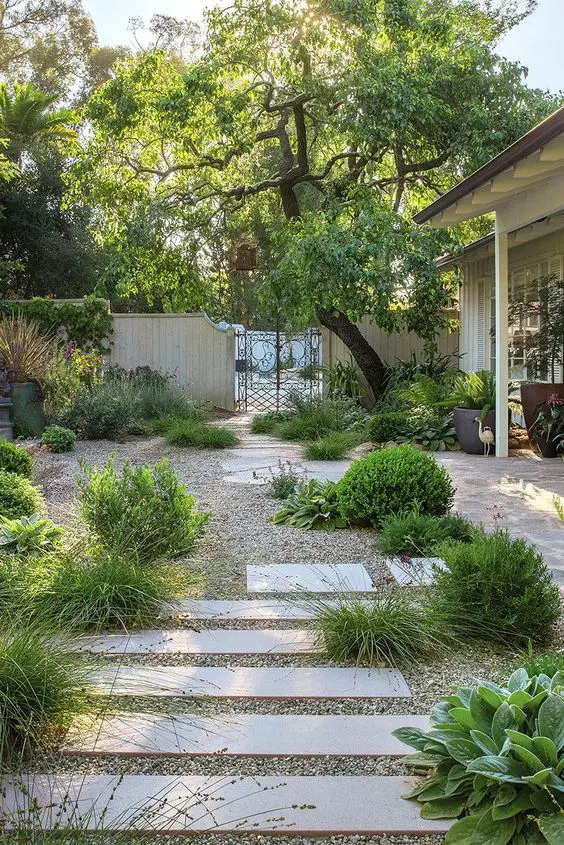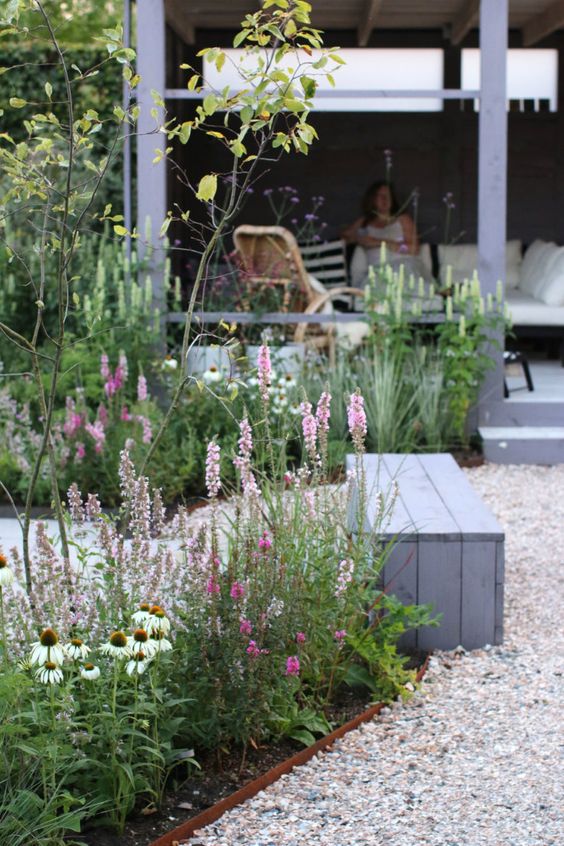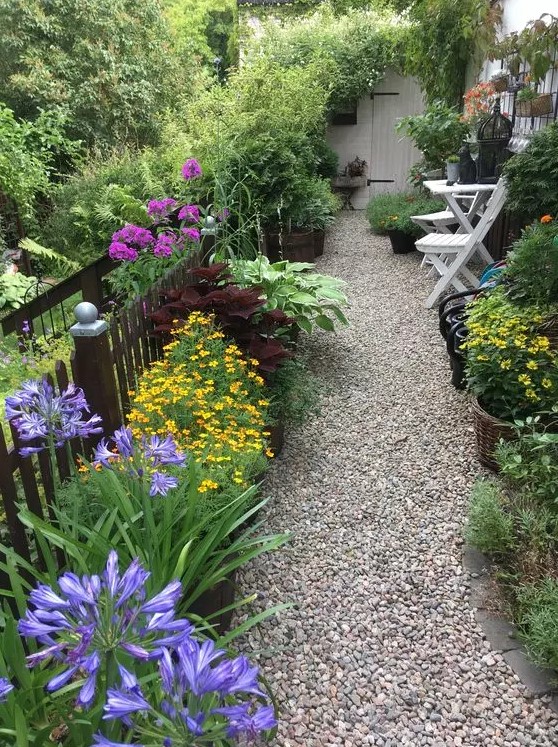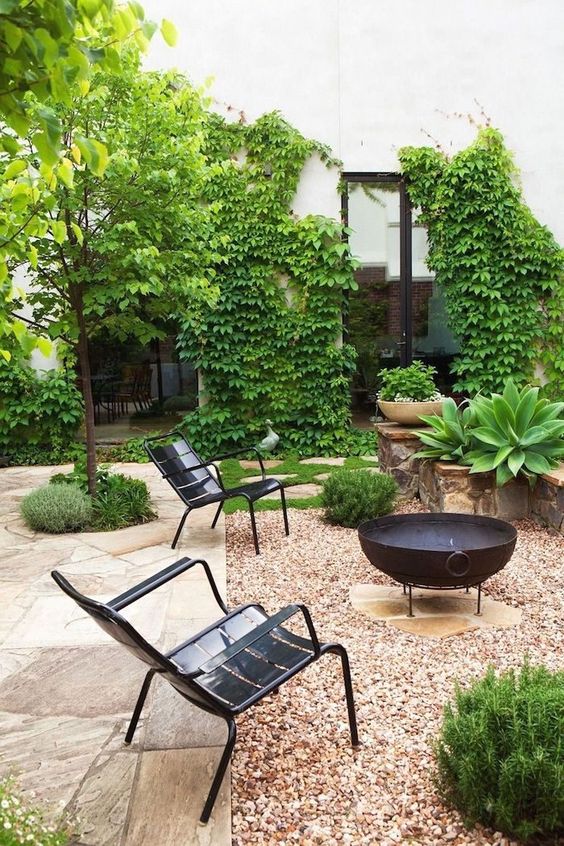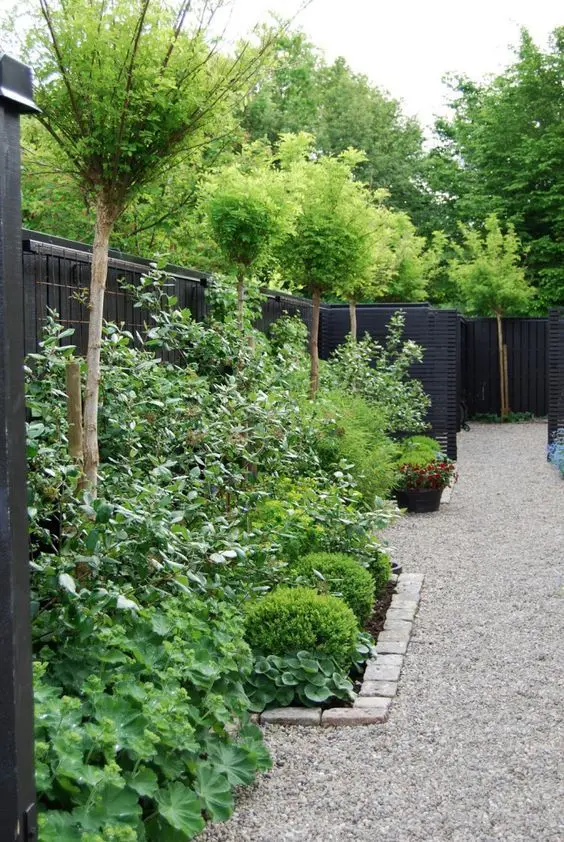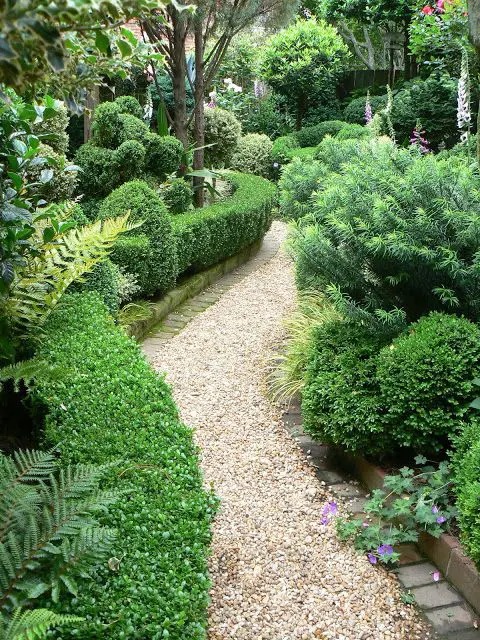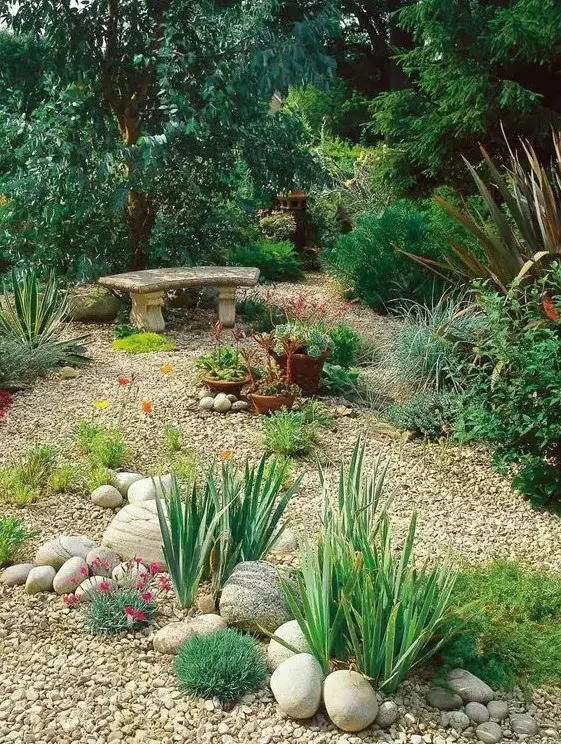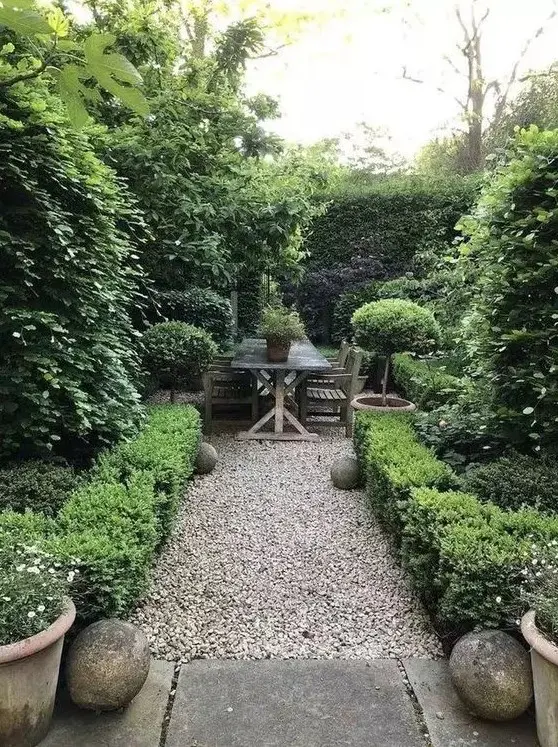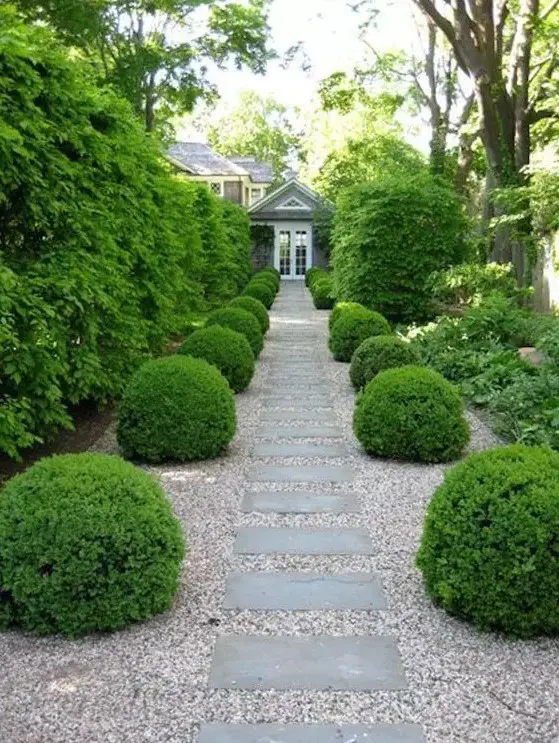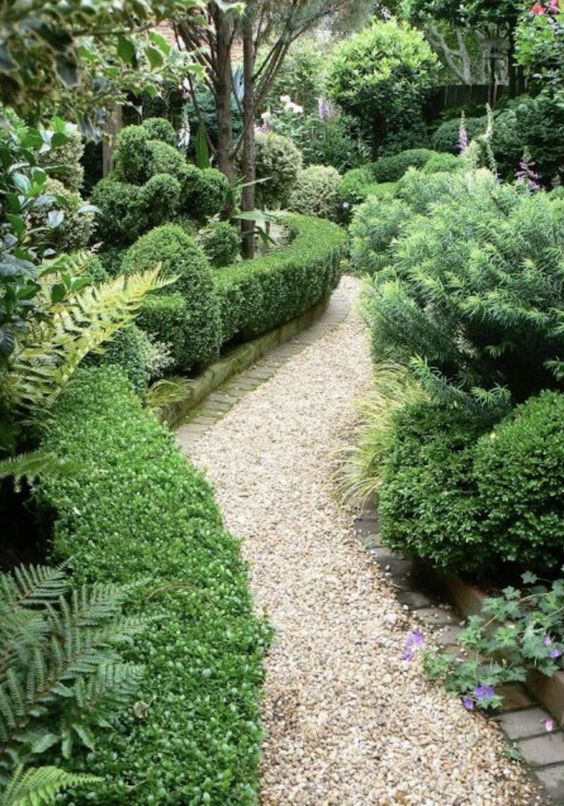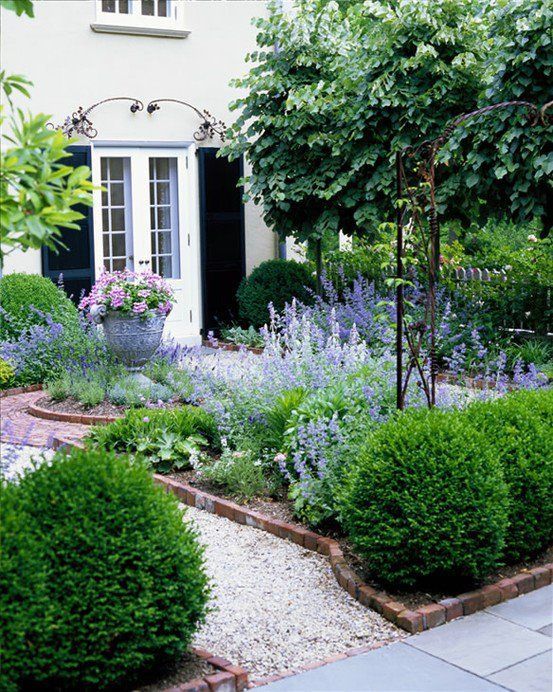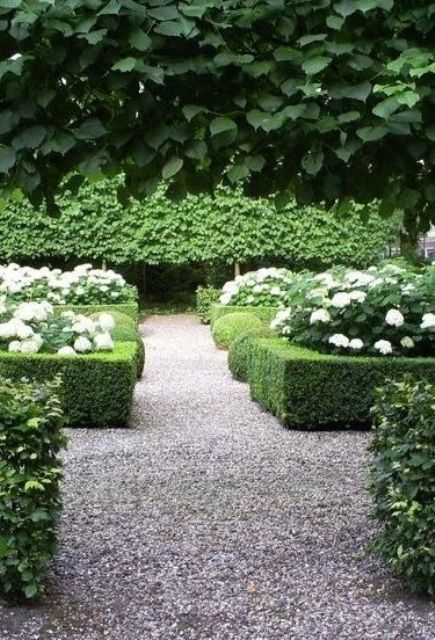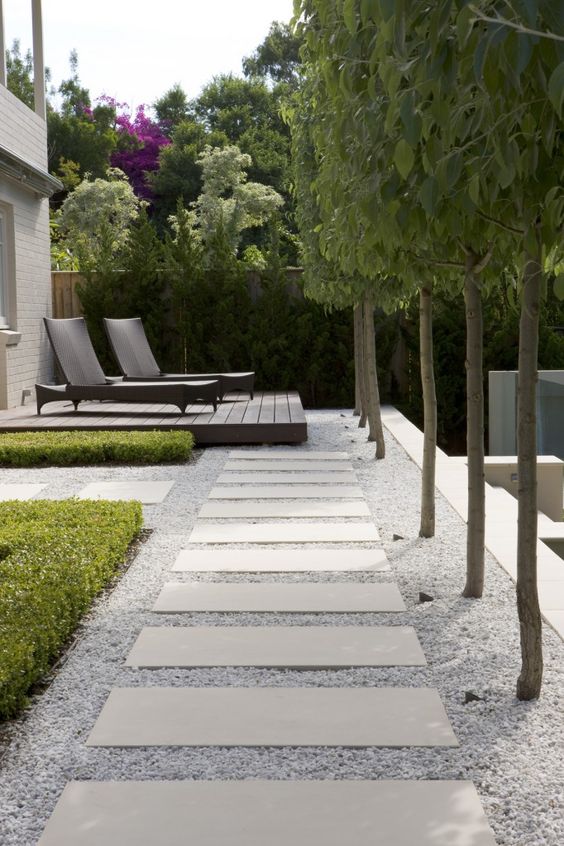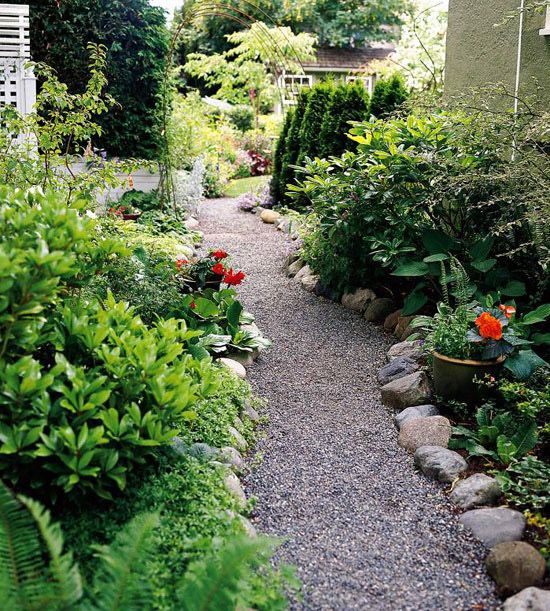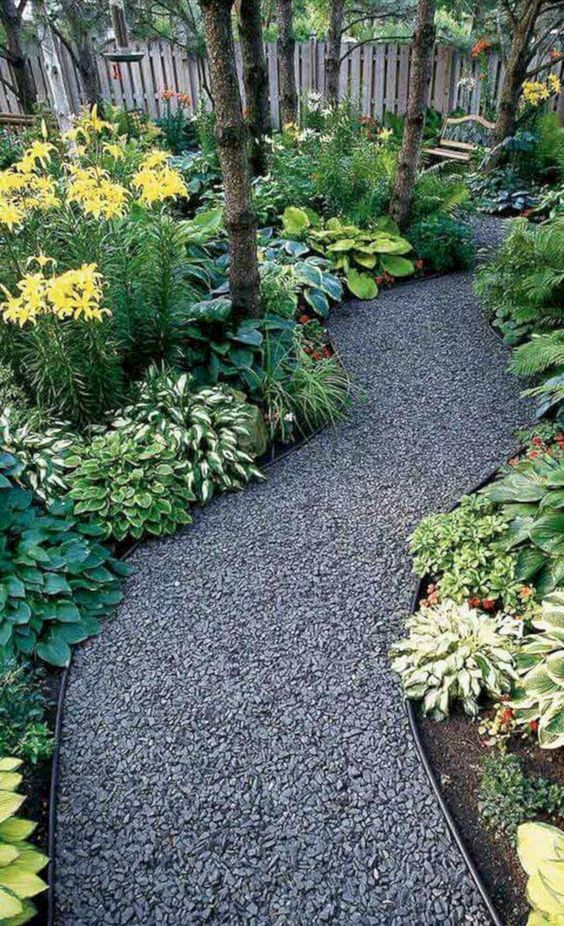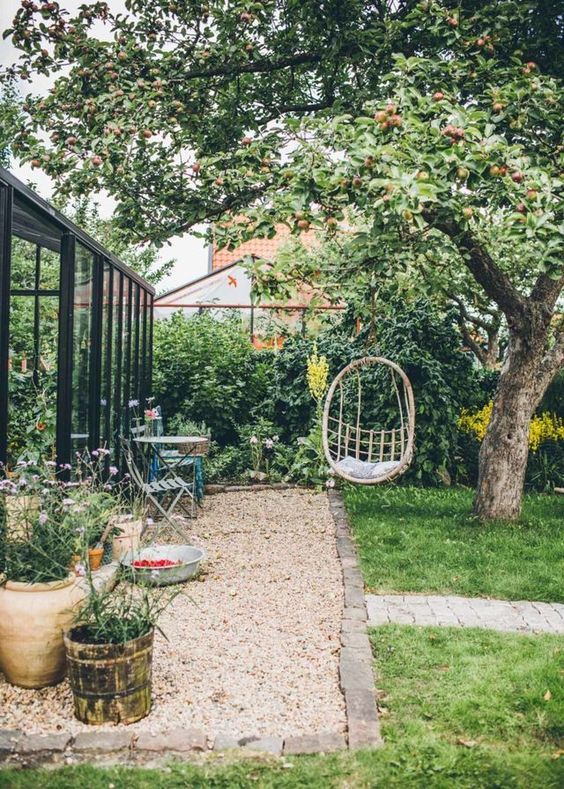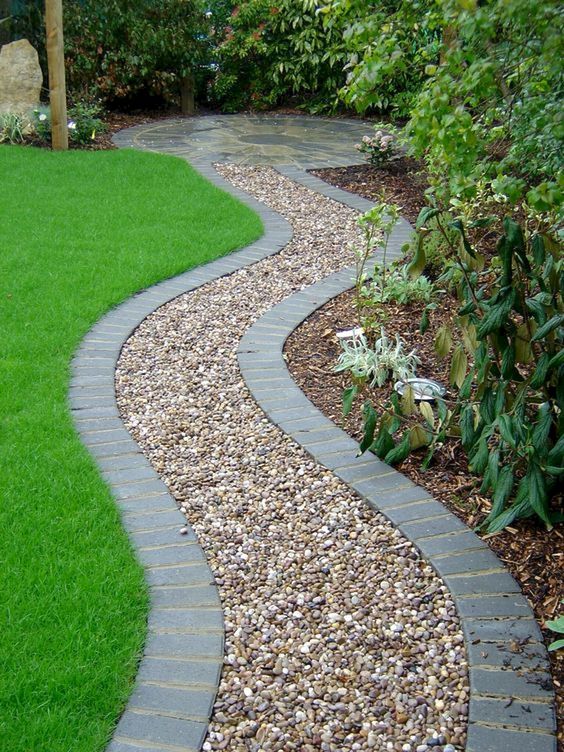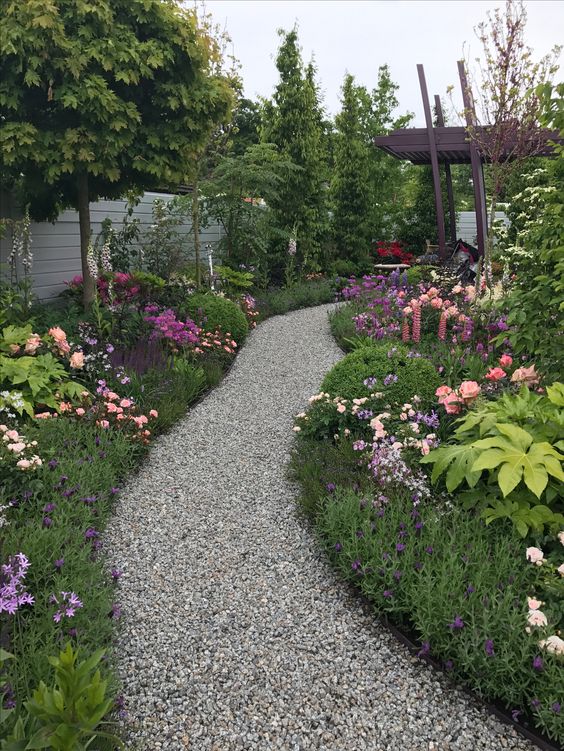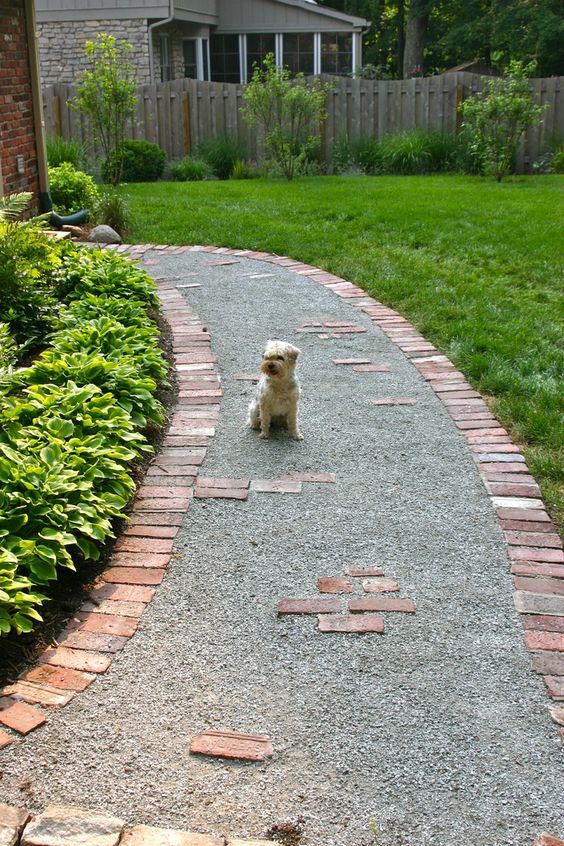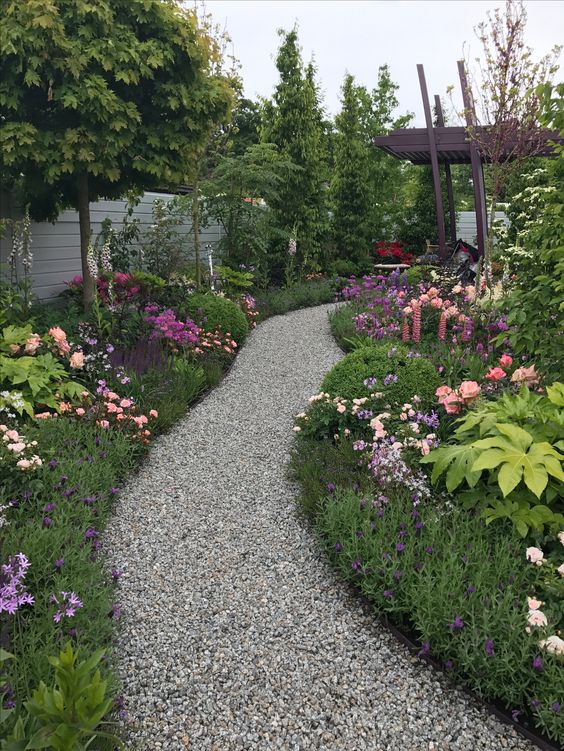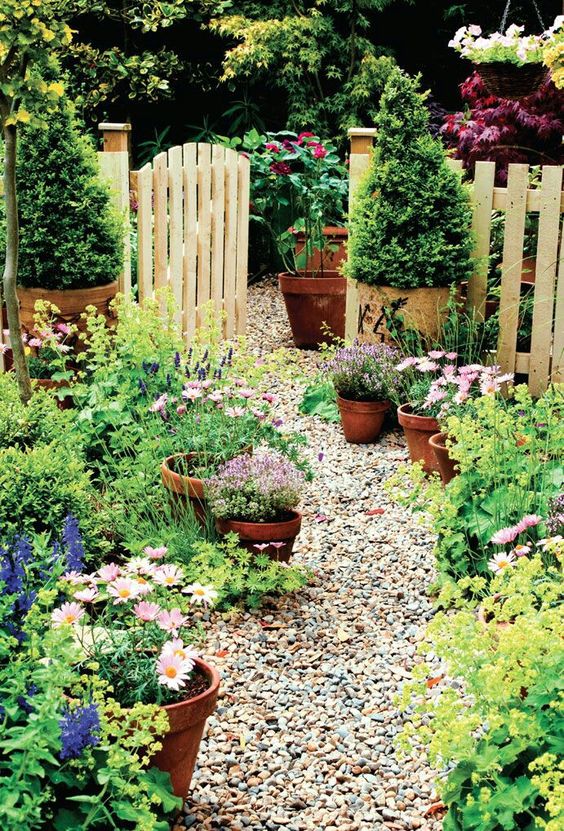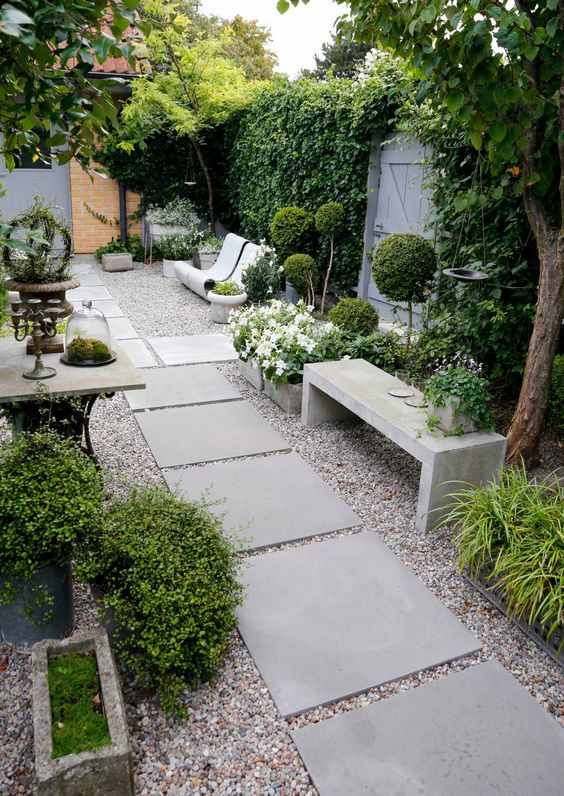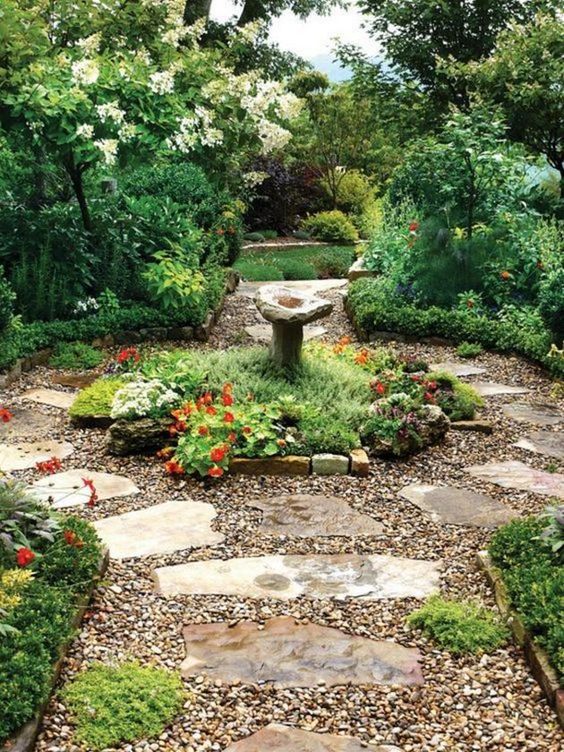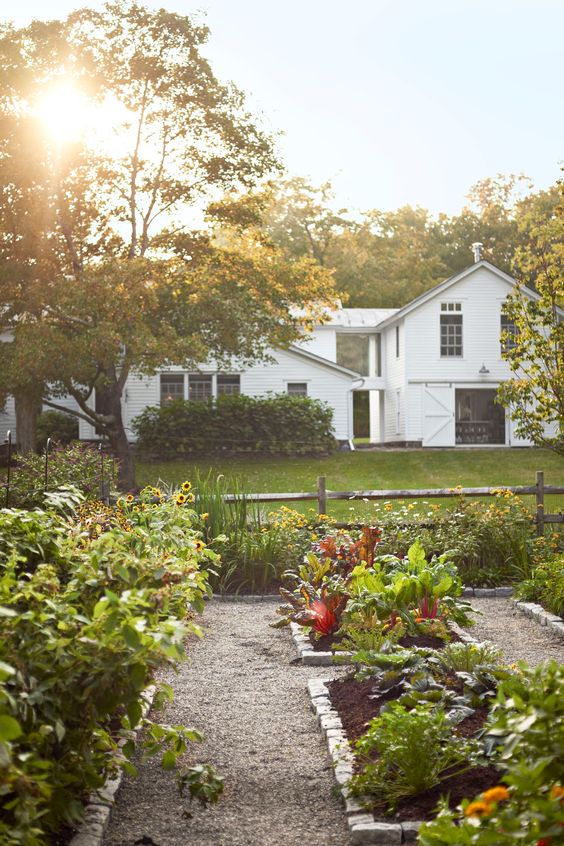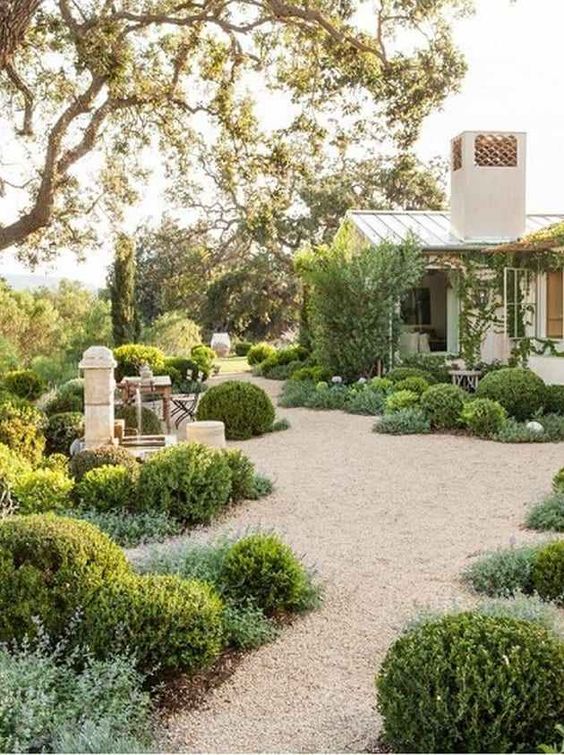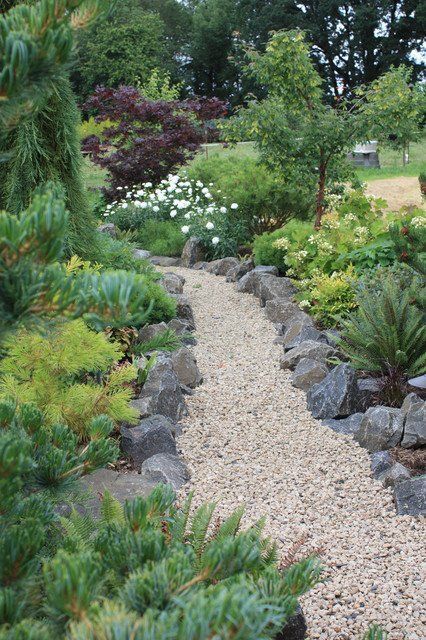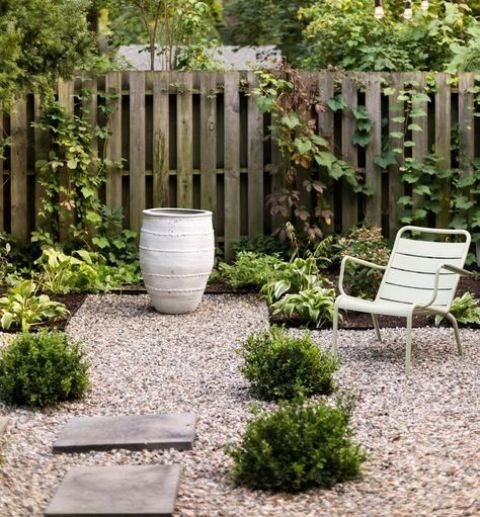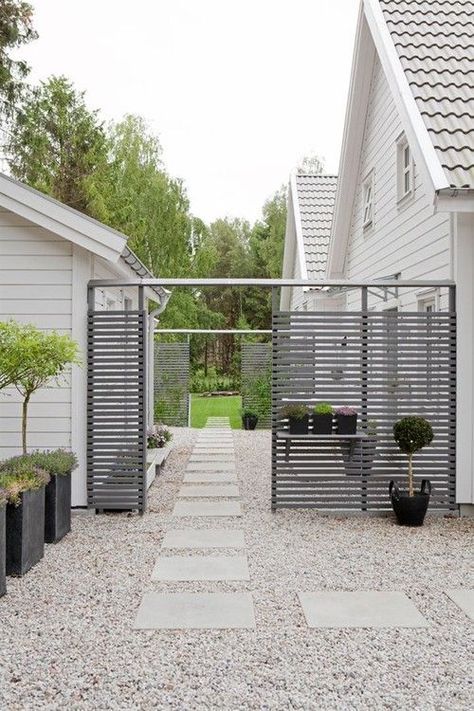Available in an almost infinite range of colors, textures, and sizes, gravel is in increasing demand for landscape projects because it looks good (and feels good underfoot), benefits the environment, and saves money. From pea gravel to its cousin decomposed granite, gravel is a budget-friendly alternative to larger slaves of stone and a smart solution to drainage problems. Different types of gravel—including marble chips, river rock, and granite—are available in a range of colors from black to gray to blue to buff that complement greenery and create a soothing backdrop in a garden. But besides some obvious advantages, they have some disadvantages, too. Let’s take a look at both to make a right decision.
Pros
Gravel paths are easy to install and you can do it yourself. When you make a gravel path, you simply dig out the soil, spread the gravel and you’re done: gravel fills in low spots. Gravel is affordable: you don’t have to spend money on extra materials such as sand and expensive stone, tile or brick and it doesn’t cost much. Gravel is an inexpensive terrace option, but it also looks inexpensive when you compare it to more finished options such as granite paving stones. You can cut costs even further by laying a base layer of three inches of crushed rock and laying a few inches of more expensive gravel over the base. Drainage is another advantage of gravel: water drains through it easily, the only exception is heavy clay soil. Gravel materials can also be made from recycled materials for a more sustainable and eco-friendly alternative. As said before, gravel comes in various types and shades, and you will easily complement your outdoor space with it.
A bright garden with greenery, blooms and gravel pathways is a lovely idea for a relaxed space with a rustic feel.
A chic modern garden with a gravel path, garden beds with shrubs and brick edging and a traditional fountain.
A colorful and bold garden with lots of blooms and trees, with gravel pathways and some wooden furniture.
A cool garden nook with lots of greenery, a hammock with pillows, a gravel path with metal edging, a basket with blankets.
A cool gravel pathway with concrete steps and greenery and shrubs around is a lovely solution for a modern outdoor space.
A cozy and cool garden with a gravel pathway, greenery and shrubs, a pedestal with a potted plant and some stones and rocks.
A cozy and welcoming backyard with shrubs and blooms, a gravel pathway and blue wooden chairs plus a side table.
A creative green garden with trees, shrubs, greenery, a gravel pathway with rock edging looks very natural.
A gravel pathway with some reclaimed wood steps, greenery and blooms around is a cool idea for a rustic outdoor space.
A green garden with trees and grasses and a gravel pathway looks very modern, stylish and eye-catchy.
A laconic and modern garden with a green lawn, a gravel path with stepping stones, potted greenery and a living edge.
A lovely gravel pathway surrounded with tall grasses and pink blooms is a cool idea for a garden that isn't intended to look too formal.
A lovely modern farmhouse garden with greenery and shrubs, with gravel pathways is a cool idea to steal.
A lush green garden with shrubs, greenery and trees, with white flowers, a small space done with gravel and simple garden furniture.
A minimalist garden with a green lawn and a gravel pathway and some shrubs and greenery is a stylish and edgy idea.
A modern and a bit rustic garden with lots of greenery and trees, with reclaimed wood furniture and a gravel path plus stone steps.
A modern and chic garden with a gravel path, wooden dining set, greenery, shrubs and trees is a lovely and chic space.
A modern and colorful backyard with bright blooms and shrubs and a gravel pathway is a cool solution for a modern space.
A modern and elegant side yard with a grave path, greenery and shrubs is a stylish solution for a modern home.
A modern and refined sid eyard with green grass, greenery and shrubs, blooms, a gravel path, a bench and a fountain.
A modern and relaxed garden with a gravel space, wooden chairs and a table, greenery, shrubs and trees and a suspended bench.
A modern backyard done with pea gravel, with greenery and shrubs, a white chair, a large planter and some stepping stones.
A modern backyard with gravel and concrete stepping stones, a tree and shrubs and a shed for gardening.
A modern backyard with gravel, folding garden furniture, greenery and shrubs, some trees and a green lawn.
A modern bright garden with lots of greenery and purple blooms, a gravel path, some tall shrubs and trees.
A modern edgy garden with a gravel path and stepping stones, a green lawn, shrubs and blooms and some garden furniture.
A modern gravel backyard with a tree, potted plants and blooms, some garden furniture is a shadowy and welcoming space.
A modern green garden with a lot of greenery and shrubs, gravel and large stones, a little terrace is cool and modern.
A modern inner yard with gravel on the ground, modern black furniture, a bench, greenery and some trees is chic.
A modern sloping backyard with a green lawn, a gravel pathway and a staircase of stone is a cool idea for a modern space.
A pretty and cozy garden with greenery, white and purple blooms, a tree and a gravel path is a lovely and welcoming space.
A pretty and cute garden with greenery and blooms in garden beds with brick and rock edges, gravel paths, a former greenhouse turned into an outdoor room.
A pretty countryside garden with greenery and blooms, with planters, a gravel pathway and some stone steps.
A pretty green garden with greenery and shrubs, some blooms, decor, red chairs and a gravel path with rock edging.
Cons
Patio furniture doesn’t sit well on gravel surfaces, because gravel doesn’t form a solid base. The legs of tables and chairs can shift down into the gravel, making the table top or chair uneven. Gravel is not comfortable at all on bare feet, even if you use more comfortable rounded gravel, such as pea gravel. While the simple solution would be to simply wear shoes but the gravel can still hurt your feet through common summertime footwear such as flip-flops. The small stones can develop a film of algae, particularly in areas of heavy rainfall. It’s impossible to keep debris such as lawn clippings, fallen leaves, acorns and twigs out of the gravel. The main problem with gravel is that unless you place a good weed-membrane beneath it, weeds will easily grow through. These are all the pros and cons, so what would you say to gravel in your garden, yes or no?
A pretty relaxed garden with greenery, blooms in pots and not only, with a gravel path and some dark wood.
A relaxed modern garden with a gravel path and stepping stones, greenery and shrubs and some wooden benches.
A relaxed modern garden with a gravel space, stepping stones, greenery, blooms and shrubs and a large tree.
A Scandinavian backyard with a wooden and stone deck, a gravel space with a daybed, potted blooms around.
A Scandinavian garden with garden beds with metal edging, blooms and greenery, grey wooden furniture and a gravel path.
A small backyard with a gravel path, bold blooms and greenery and garden furniture is a lovely idea.
A stylish modern backyard done with gravel and stone, with metal chairs, a fire put, some greenery around is cool.
A stylish modern garden with a gravel pathway, garden beds with greenery, shrubs and trees is a chic and edgy idea.
A super lush greenery garden with shrubs and greenery and trees around and a gravel pathway are a lovely combo.
A veggie garden with raised garden beds with wood edging and a gravel pathway is a cool and lovely space.
A wild-looking garden with lot sof greenery and shrubs, with potted plants and a stone bench, with gravel pathways.
An elegant and chic garden with lots of greenery and green trees, with potted plants and stone spheres is amazing.
An elegant and refined garden space with a gravel path and stone steps, sphere bushes and trees around.
A chic neutral-colored gravel pathway with brick lining in a lush garden is a cool idea that allows drainage.
A classic small garden with garden beds lined with bricks and white gravel paths that are manicured and are very neat.
A formal or classic garden with gravel pathways - gravel is a cool idea for such a garden with large paths.
A formal outdoor space with a gravel and long paving stones plus a wooden deck and trees lining the path.
A gravel garden path lined with large rocks that help to keep the gravel in place and add a wild look.
A gravel garden space with some garden furniture and potted greenery and blooms and lining of bricks.
A gravel path with large rocks is classics that always works for a garden, which doesn't look formal.
A gravel pathway lined with red bricks is a stylish and timeless idea, and your gravel won't finish on the lawn.
A small cottage garden with a gravel path, terra cotta pots and a basic picket fence painted yellow.
Light-colored path gravel will make your garden very welcoming and will make it look very well-groomed.
Neutral-colored gravel combined with concrete and stone plus lush potted greeenery for amodern garden.
Pairing light-colored gravel and large rocks makes the garden wild yet groomed and chic.
Pea gravel with pavers looks chic and neat and though furniture won't sit comfortably on gravel, you may add pavers there.
Pretty pale gravel and stone paving path with a contemporary horizontal slatted fence for a modern outdoor space.
